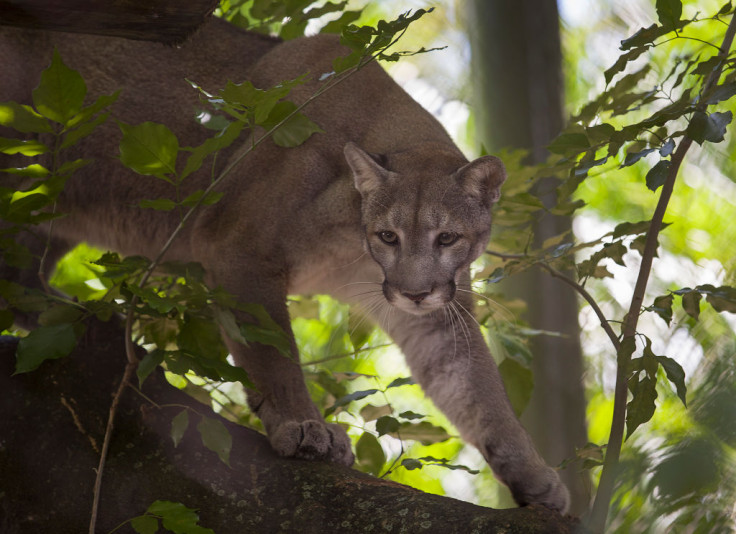
Since opening just over a month ago, the immigration detention facility at the Dade-Collier Training and Transition Airport — widely known as "Alligator Alcatraz" — has come under intense scrutiny from the public, human rights organizations, migrant advocates, and environmental groups.
The controversial facility was constructed inside Big Cypress National Preserve, a 720,000-acre protected area in Florida that is home to dozens of threatened and endangered species. Among them is the Florida panther, which experts warn could lose thousands of acres of critical habitat due to continued construction and operations at the site.
As reported by the Miami Herald, wildlife ecologist and panther expert Randy Kautz testified during an Aug. 6 federal court hearing in Miami that the rare big cats, which are native to Florida, may be forced out of their territory by increased activity around Alligator Alcatraz, potentially setting back decades of conservation efforts.
Kautz, who has studied Florida panthers since the early 2000s, was among several experts testifying in support of a lawsuit challenging the legality of the facility. The lawsuit claims Florida Gov. Ron DeSantis and the Trump administration bypassed critical environmental safeguards to fast-track construction.
Originally filed by Friends of the Everglades and the Center for Biological Diversity, the lawsuit argues the facility violates both the National Environmental Policy Act (NEPA) and the Endangered Species Act (ESA). It claims federal agencies failed to fully assess the environmental impact of the project and ignored legal protections for endangered wildlife in the area.
During his testimony, Kautz explained that Florida panthers typically avoid areas with high levels of human activity by at least 200 meters, and avoid areas with intense artificial light by as much as 400 meters. If those disturbances have increased since the facility began operations in July, he said, it is highly likely panthers will abandon the area altogether.
He also warned that increased fencing, noise, and vehicle traffic could further strain the population. Kautz cited habitat models predicting that panthers could lose 19 percent of their territory by 2070 due to sea-level rise and human development — a loss that the Alligator Alcatraz project would likely accelerate.
According to habitat maps created by Kautz in collaboration with the U.S. Fish and Wildlife Service, Alligator Alcatraz is surrounded on all sides by prime panther breeding grounds. The facility also sits within what is classified as a "source habitat" — an area with a high concentration of panthers that is considered essential for the species' long-term survival.
As noted by the National Wildlife Federation, the Florida panther is the only subspecies of mountain lion remaining in the eastern United States. In the 1970s, the population dwindled to just 20 to 30 individuals due to hunting and habitat loss, prompting its inclusion on the U.S. endangered species list in 1973. Today, wildlife officials estimate there are just over 200 Florida panthers left in the wild.
Historically, the Florida panther's range stretched across the Gulf Coast, from Florida to Louisiana and as far north as Arkansas. Today, their last remaining wild population exists in the southwestern tip of Florida — precisely where Alligator Alcatraz now operates.
"This project, if it continues, will add to that," Kautz said. "Another brick in the wall, if you will."
© 2025 Latin Times. All rights reserved. Do not reproduce without permission.






